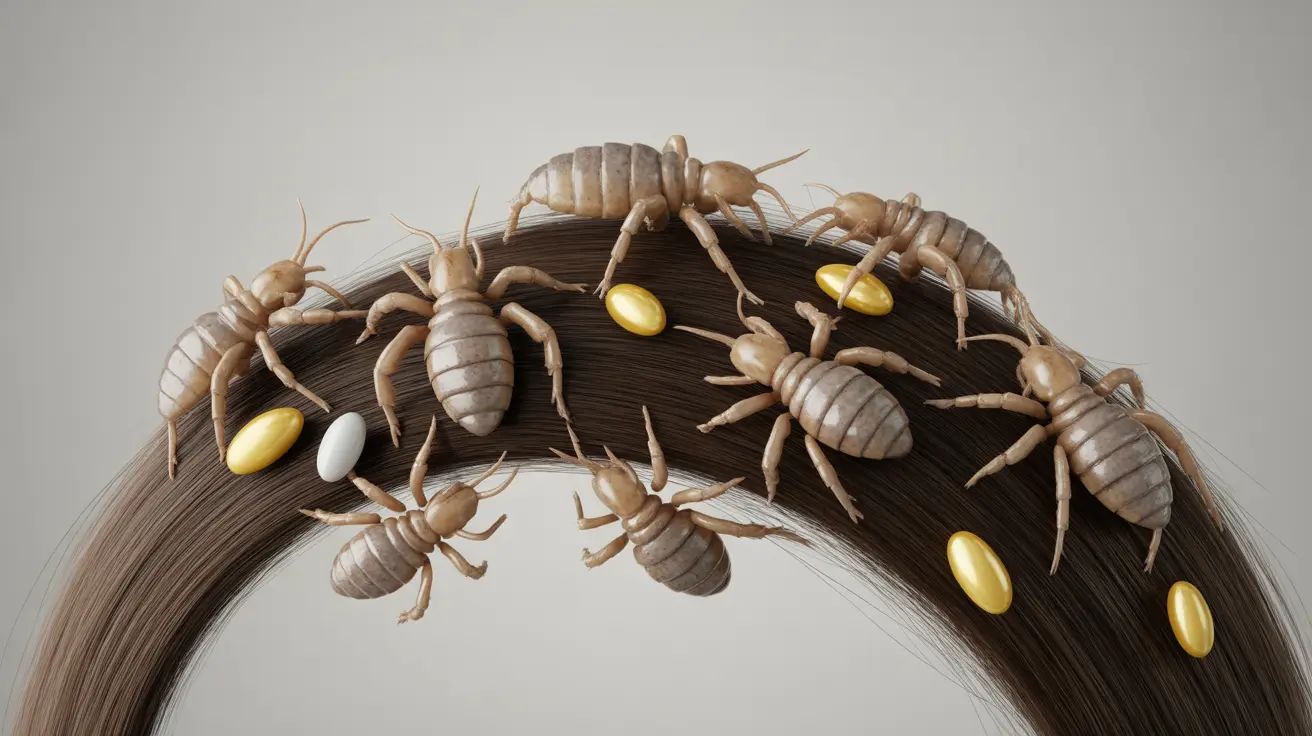Discovering head lice can be concerning, but knowing exactly what to look for is the first step in effective treatment. Head lice are tiny parasitic insects that live on the human scalp, and while they're a common problem, especially among school-aged children, they can be tricky to identify without proper knowledge.
This comprehensive guide will help you understand exactly what lice and their eggs look like, where to find them, and how to distinguish them from other common scalp conditions like dandruff.
Physical Characteristics of Head Lice
Adult head lice are small, wingless insects measuring about 2-3 millimeters in length – approximately the size of a sesame seed. They have six legs with specialized claws designed for gripping hair shafts, and their bodies range from tan to grayish-white in color. When feeding, lice can appear darker due to ingested blood.
Identifying Lice on Different Hair Colors
Head lice adapt their coloring slightly to blend with their environment, making identification challenging on different hair colors:
- On dark hair: Lice appear lighter, standing out as tan or light gray specks
- On light hair: Lice tend to appear slightly darker, taking on a more brownish hue
- On red hair: Lice often appear reddish-brown
- On gray hair: Lice maintain their typical grayish-white appearance
Understanding Nits (Lice Eggs)
Nits are lice eggs that are firmly attached to hair shafts. They have several distinctive characteristics that help differentiate them from other scalp conditions:
- Oval-shaped and about the size of a knot in thread
- Yellowish to pearl-white in color
- Attached at an angle to the hair shaft
- Located within 1/4 inch of the scalp
- Cannot be easily brushed or shaken off
Common Locations for Lice and Nits
Head lice and their eggs typically concentrate in specific areas of the scalp:
- Behind the ears
- Near the neckline
- At the crown of the head
- Along the hairline
- Around the base of the scalp
Signs and Symptoms of Infestation
Beyond visual identification, several signs may indicate a head lice infestation:
- Intense scalp itching, especially at night
- Visible small red bumps on the scalp
- Sensation of something moving in the hair
- Small black dots on pillowcases or clothing
- Irritability and difficulty sleeping
Frequently Asked Questions
What does head lice look like on different hair colors?
Head lice appear as tan to grayish-white insects that slightly adapt their coloring to their environment. They appear lighter against dark hair, darker against light hair, and can take on a reddish-brown tint in red hair. Regardless of hair color, they're about the size of sesame seeds.
How can I tell the difference between lice eggs (nits) and dandruff?
Unlike dandruff, which easily flakes off, nits are firmly attached to the hair shaft at an angle. Nits are oval-shaped, yellowish to pearl-white, and cannot be brushed or blown away. Dandruff appears as white or grayish flakes that easily fall from the hair.
What are the signs and symptoms that indicate a head lice infestation?
Key signs include intense scalp itching (especially at night), visible bugs in the hair, small red bumps on the scalp, and the presence of nits attached to hair shafts. You might also notice small black dots on pillowcases and experience difficulty sleeping.
Where on the scalp are head lice and their eggs most commonly found?
Head lice and nits are most commonly found behind the ears, near the neckline, at the crown of the head, and along the hairline. These areas tend to be warmer and provide optimal conditions for lice survival and egg laying.
How can I identify live lice compared to empty nit shells in the hair?
Live lice are mobile insects that move quickly through the hair, while empty nit shells appear white or translucent and remain firmly attached to the hair shaft. Live nits (unhatched eggs) are darker in color and are typically found closer to the scalp, within 1/4 inch of the scalp surface.




